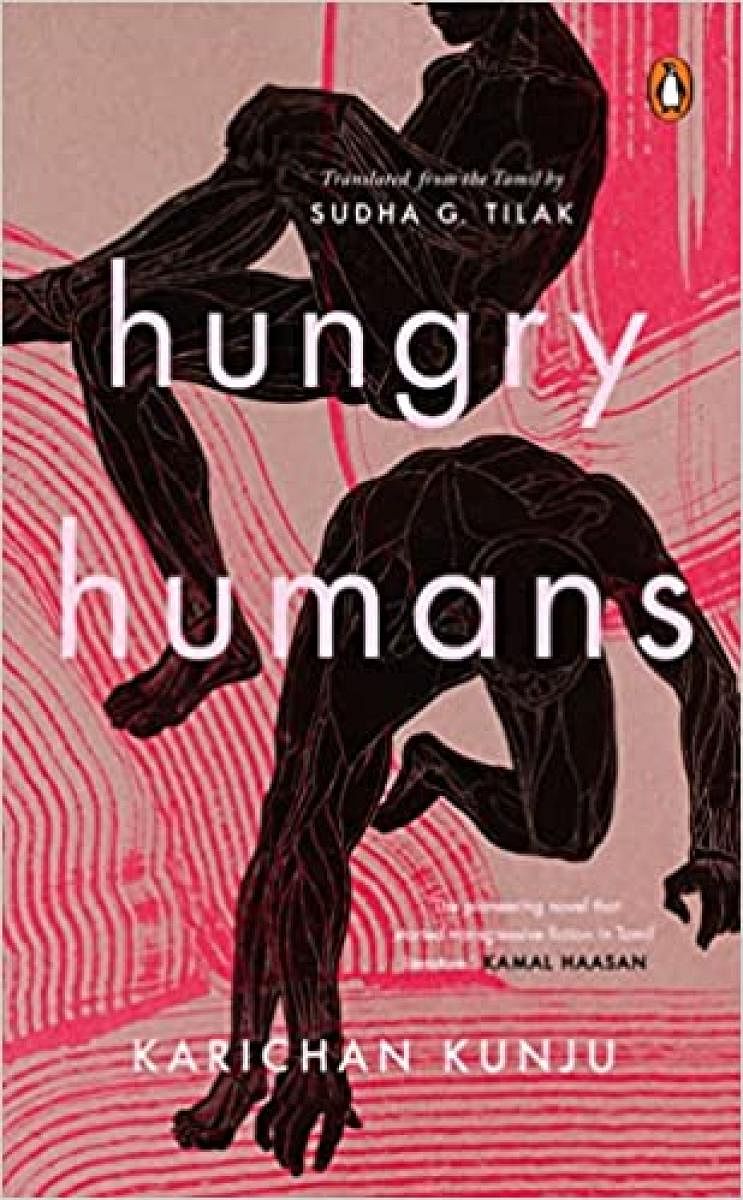
Some books are magical. The unfolding of events in Hungry Humans by Karichan Kunju (originally published in Tamil as Pasitha Manidam) and translated by Sudha G Tilak, is as immediate and timeless as peering into the innards of a bioscope at a world moving in slow motion. For, history is also what transpired a couple of generations ago, so near and familiar that it shapes our sentences. History is in those unspoken words that make us who we are today. History is a milieu so real we live it each hour despite the transposition in time.
Each great novel has at least one component that separates it from the unread pile. In the hands of a master storyteller, the structure or the internal format of the novel is reinterpreted in the creative fire until it is a thing of beauty itself. This novel refuses to follow the expected lines of historicity or linear retelling. Instead, small vignettes, written almost conversationally and offering insights into the protagonists, unfurl across time and space in small clusters that don’t add up initially only to later conglomerate and reveal a broad sweep by which a tiny village, its inhabitants, and their fates, the towns and cities around that village and the microcosmic lives of an entire generation come alive in a sweeping sentient panorama.
While the story begins with the orphan Ganesan’s return to Kumbakonam and stays for a few chapters with his explorations and his vivid memories, this is as much about Kitta as it is about Ganesan. The protagonists’ lives crisscross often by dint of being from that same tiny village and by loving the same women. And they have in common their Iyer birth and their school dropout status. These are both men pushed to the edges of social acceptance by forces beyond. Their wayward ways have led them to lives richer and far more rewarding than imagined possible. For they have carved out with moderate success their new lives in unconventional ways. Almost fallen heroes due to circumstances, their stories also split open the hollow assurances of their Brahmanical background in the social milieu of those times.
Cold solace
Illnesses not really detailed or diagnosed pepper the narrative and women characters waste away in fatal malaises: notably Savitri, Machi and Ammu’s mother and both the women that Ganesan had married, Sundari and Kothai. The ill, the hospice run by charitable Christian missionary nuns that Ganesan visits, the hospital where Doctor Amma works and Kitta’s pharmacy all coalesce to provide a counterpoint for all the ill and dying as if to say medicine and its succour are powerful though not enough to elevate the human condition. It most certainly offers only cold solace to Ganesan, terribly afflicted by leprosy and treated as a beggar and outcaste by all around him despite being rich enough to be self-sufficient. It is almost as if the author wishes to alert his readers to something undiagnosed and diseased that runs among us all, something no medicine may heal.
Also buried under the tales of a sparkling cast of characters is a vibrant throbbing vein of sexuality. The orphan Ganesan was adopted by the pious Vadhyar and taken to National High School at Mannurgudi for higher education only to catch the eye of the wealthy Singam Rauth who coerces him to drop out of school to become his lover.
Uneducated despite his early promise, his physique and good looks help him hop from one lover to the next in ways that keep his longings and wallet fed. Both Ganesan and Kitta covet Machi. While Ganesan has a series of teenage experiences with her, Kitta actually exploits the fact that she is married to a transwoman Mathoor and despite being married to her younger sister, embarks on a long-term sexual liaison with her. Both men are unapologetic about their appetites. And to be fair, the author does not make apologies or innuendoes about any woman’s sexual needs either. It is all accepted, as fact.
To the contemporary reader, it feels a little strange to read of society so varied and vast with only time or circumstances playing the villain. The people are always noble and committed to doing the right thing despite their situation. There are no enmities between business partners and in marriages or affairs, the nobler path is taken by all. When a couple breaks up, it is with dignity and without acrimony. It is truly a simpler, loftier society. The failings are generic, but the heroism is individual.
A word must be said of the translator’s role here. This is a piece of human history, a sociological phenomenon that readers outside Tamil Nadu are privileged to discover thanks to her exquisite prose.